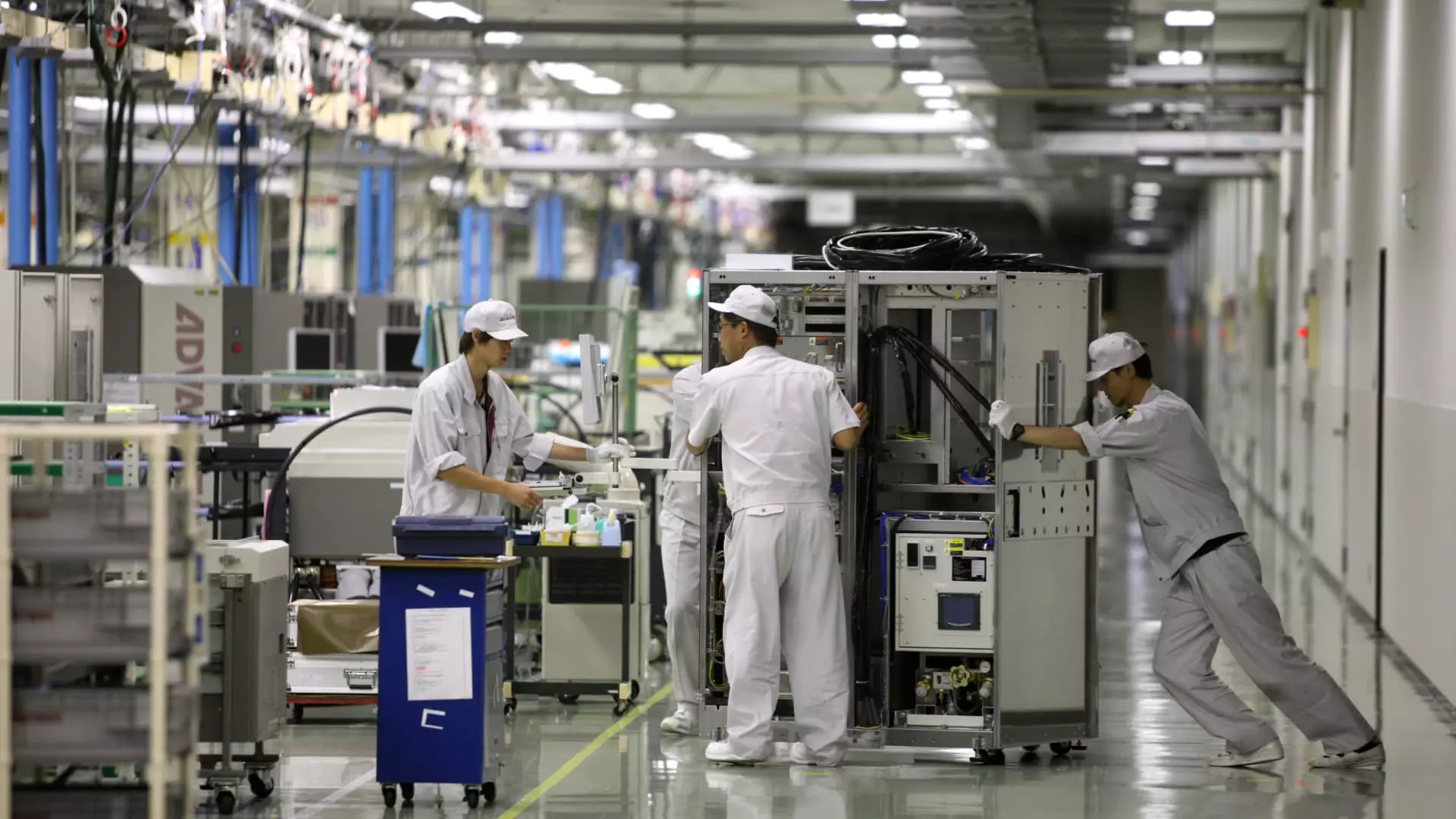The semiconductor industry, particularly in Japan, faced a significant upheaval recently, stirred by growing competition from artificial intelligence (AI) startups in China, especially the rapid developments of DeepSeek. This Chinese AI company poses a substantial threat to established leaders in the global tech arena, particularly the United States, drawing concerns not just domestically but across the broader Asian tech landscape. As investors reacted to these formidable developments, Japanese chip-related stocks took a notable hit on Monday, indicating a shift in market sentiment that has raised fears about the sustainability of Japan’s semiconductor ambitions.
In the wake of these market developments, the stock prices of several key players in Japan’s semiconductor industry experienced a marked decline. For instance, Advantest, a testing equipment supplier heavily linked with Nvidia, saw its shares tumble by 7.99%. Other significant firms also suffered, with Tokyo Electron and Softbank Group registering drops of 3.94% and 5.4%, respectively. Investors have begun to pivot, shifting from growth stocks that traditionally capture investor interest to value stocks during tumultuous periods. This has sparked a broader discussion about the relative fast-paced advancements in the Chinese semiconductor sector and the potential repercussions for Japan’s technology landscape.
DeepSeek’s Emergence and Market Reactions
DeepSeek has made waves within a short time frame, having launched a large-language model at the end of December, which purportedly took less than $6 million and only two months to develop. Last week’s introduction of their advanced reasoning model, r1, posed a challenge to OpenAI’s offerings, igniting immediate market concerns about the implications of such an affordable, efficiently produced AI model. The staggering speed at which DeepSeek advanced its technologies has triggered a wave of caution among traditional tech giants, raising questions about whether their entrenched market positions could be at risk.
Veteran investor Jesper Koll summed up this apprehension neatly: although Japan’s semiconductor producers have immense potential, their ability to scale production remains a significant limitation, particularly when measured against China’s ambitious push to become a leader in semiconductor technology. The concerns articulated by Koll reflect a broader anxiety that Japanese firms might lag behind in an industry characterized by rapid development and execution.
The ramifications of DeepSeek’s developments extend beyond Japan’s chip manufacturers to other tech-related sectors. A decline in data center shares, which had previously benefitted from increased infrastructure spending, is anticipated as reliance on traditional models falters under the competition’s pressure. Wire and cable firms such as Furukawa and Fujikura also faced downturns, indicating a widespread impact on the tech supply chain arising from these newly emerged competitive threats.
Market analysts have postulated that the impact is reflective of a larger trend towards reassessing the valuations of key technology players, often dubbed the “Magnificent 7.” As the market digests the ramifications of a more affordable AI solution like DeepSeek, volatility in tech stock prices could emerge as investors recalibrate their expectations.
As the momentum shifts towards more efficient and cheaper AI solutions, the real concern is whether Japan’s semiconductor industry can adapt quickly enough to retain its competitive edge. The technologies that once positioned it as a leader are now experiencing competition from an unexpected source, leading to speculation about the future resilience of its tech ecosystem.
While the introduction of DeepSeek’s innovative approaches raises questions about the sustainability of the current tech giants’ pricing power, it also provokes critical introspection within Japan’s semiconductor framework. As major entities within the Japanese tech space climb the steep hill of innovation, the real test will be their capacity to refine, adapt, and leverage their storied expertise against burgeoning competition. The industry stands at a crossroads, faced with the challenge of proving that it can not only survive but thrive in an ecosystem increasingly dominated by new and agile competitors.


Leave a Reply